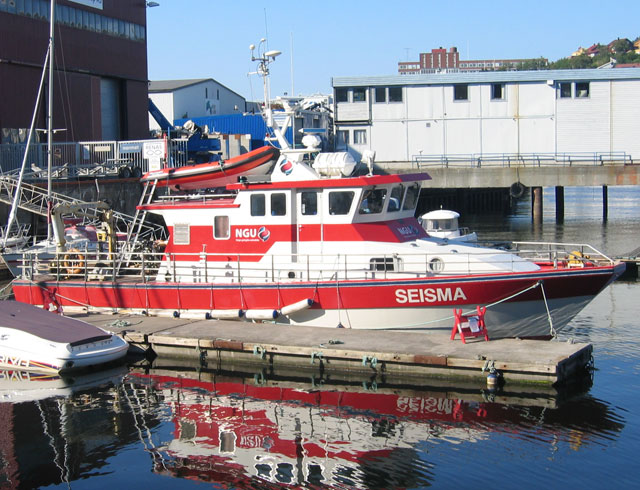Geological Survey Of Norway on:
[Wikipedia]
[Google]
[Amazon]
 Geological Survey of Norway (), abbreviation: ''NGU'', is a Norwegian
Geological Survey of Norway (), abbreviation: ''NGU'', is a Norwegian
2012-07-11.
 NGU's main work is related to collecting, processing and imparting knowledge related to the physical, chemical and mineralogical characteristics of the countries
NGU's main work is related to collecting, processing and imparting knowledge related to the physical, chemical and mineralogical characteristics of the countries
About NGU
2008-01-27. Important areas include the
2008-01-27. # Long-term value creation from geological resources # Increase the use of geoscience knowledge in spatial planning and development # Enhanced knowledge of the country's construction and geological processes # Good communication, management and customization of geological knowledge # Increased quality and efficiency through good interaction internally and externally
 The Geological Survey of Norway was established on 6 February 1858 by
The Geological Survey of Norway was established on 6 February 1858 by
 Geological Survey of Norway (), abbreviation: ''NGU'', is a Norwegian
Geological Survey of Norway (), abbreviation: ''NGU'', is a Norwegian government agency
A government agency or state agency, sometimes an appointed commission, is a permanent or semi-permanent organization in the machinery of government (bureaucracy) that is responsible for the oversight and administration of specific functions, s ...
responsible for geologic
Geology (). is a branch of natural science concerned with the Earth and other astronomical objects, the rocks of which they are composed, and the processes by which they change over time. Modern geology significantly overlaps all other Earth s ...
mapping and research. The agency is located in Trondheim
Trondheim ( , , ; ), historically Kaupangen, Nidaros, and Trondhjem (), is a city and municipality in Trøndelag county, Norway. As of 2022, it had a population of 212,660. Trondheim is the third most populous municipality in Norway, and is ...
with an office in Tromsø
Tromsø is a List of towns and cities in Norway, city in Tromsø Municipality in Troms county, Norway. The city is the administrative centre of the municipality as well as the administrative centre of Troms county. The city is located on the is ...
, with about 200 employees. It is subordinate to the Norwegian Ministry of Trade, Industry and Fisheries
Norwegian, Norwayan, or Norsk may refer to:
*Something of, from, or related to Norway, a country in northwestern Europe
*Norwegians, both a nation and an ethnic group native to Norway
* Demographics of Norway
*Norwegian language, including the two ...
.Government.no: Subordinate agencies and institutions2012-07-11.
Mission
bedrock
In geology, bedrock is solid rock that lies under loose material ( regolith) within the crust of Earth or another terrestrial planet.
Definition
Bedrock is the solid rock that underlies looser surface material. An exposed portion of bed ...
, mineral resources, deposits
A deposit account is a bank account maintained by a financial institution in which a customer can deposit and withdraw money. Deposit accounts can be savings accounts, current accounts or any of several other types of accounts explained below.
...
and groundwater
Groundwater is the water present beneath Earth's surface in rock and Pore space in soil, soil pore spaces and in the fractures of stratum, rock formations. About 30 percent of all readily available fresh water in the world is groundwater. A unit ...
.Geological Survey of NorwayAbout NGU
2008-01-27. Important areas include the
Arctic
The Arctic (; . ) is the polar regions of Earth, polar region of Earth that surrounds the North Pole, lying within the Arctic Circle. The Arctic region, from the IERS Reference Meridian travelling east, consists of parts of northern Norway ( ...
, Antarctica
Antarctica () is Earth's southernmost and least-populated continent. Situated almost entirely south of the Antarctic Circle and surrounded by the Southern Ocean (also known as the Antarctic Ocean), it contains the geographic South Pole. ...
, Svalbard
Svalbard ( , ), previously known as Spitsbergen or Spitzbergen, is a Norway, Norwegian archipelago that lies at the convergence of the Arctic Ocean with the Atlantic Ocean. North of continental Europe, mainland Europe, it lies about midway be ...
and the continental shelf
A continental shelf is a portion of a continent that is submerged under an area of relatively shallow water, known as a shelf sea. Much of these shelves were exposed by drops in sea level during glacial periods. The shelf surrounding an islan ...
. With the motto "Geology for the Society", NGU provides maps and geological information in national databases. The activity is organized after five key principles:NGU - Annual report 20082008-01-27. # Long-term value creation from geological resources # Increase the use of geoscience knowledge in spatial planning and development # Enhanced knowledge of the country's construction and geological processes # Good communication, management and customization of geological knowledge # Increased quality and efficiency through good interaction internally and externally
History
 The Geological Survey of Norway was established on 6 February 1858 by
The Geological Survey of Norway was established on 6 February 1858 by Order in Council
An Order in Council is a type of legislation in many countries, especially the Commonwealth realms. In the United Kingdom, this legislation is formally made in the name of the monarch by and with the advice and consent of the Privy Council ('' ...
. A few years earlier, the geology student Theodor Kjerulf
Theodor Kjerulf (30 March 182525 October 1888) was a Norway, Norwegian geologist and professor at the University of Oslo. He also served as director of the Norwegian Geological Survey.
Biography
He was born in Oslo, Christiania (now Oslo), Norway ...
had submitted the idea of a Norwegian geological survey to the Norwegian interior ministry
An interior ministry or ministry of the interior (also called ministry of home affairs or ministry of internal affairs) is a government department that is responsible for domestic policy, public security and law enforcement.
In some states, the ...
.Document from the establishment of NGU, letter from Th. Kjerulf to the Interior Ministry of Norway, 8 August 1856. The survey would serve to map the country's agricultural areas and mineral deposits, as well as systematically study how the Norwegian landscape had been formed. In the mid-19th century Norway
Norway, officially the Kingdom of Norway, is a Nordic countries, Nordic country located on the Scandinavian Peninsula in Northern Europe. The remote Arctic island of Jan Mayen and the archipelago of Svalbard also form part of the Kingdom of ...
was modernizing quickly by developing industry and knowledge, along with evolving cultural life. An institution such as a Norwegian geological survey would be "convenient, scientifically necessary and honorable for the nation". The first years of its existence, mapping the bedrock, superficial deposits and mineral resources was its principal task, but it contributed to a Norwegian sense of ownership to the land, something that was especially important around 1905, after the Union with Sweden
Sweden, formally the Kingdom of Sweden, is a Nordic countries, Nordic country located on the Scandinavian Peninsula in Northern Europe. It borders Norway to the west and north, and Finland to the east. At , Sweden is the largest Nordic count ...
was dissolved. The manager Theodor Kjerulf, and his assistant, Tellef Dahll, shared the mapping of Norway. They purchased equipment, planned the work and trained their field assistants to carry out the surveys.
Manager
Management (or managing) is the administration of organizations, whether businesses, nonprofit organizations, or a government bodies through business administration, nonprofit management, or the political science sub-field of public administra ...
Kjerulf along with Dahll and several assistants had, after about twenty years of work, completed three impressive sets of maps. ''Det sødenfjeldske'' in 1:400 000, ''Trondheim stift'' in 1:800 000 and ''Det nordlige Norge'' in 1:1 million. The maps and their descriptions gave new and valuable knowledge about the Norwegian landscape, and showed that it was possible to combine the scientific, economic and cultural ambitions Kjerulf had fronted when he set out to create the survey.
Organization
There are five support divisions within the agency: *Geological Mapping **Solid Earth Geology **Quaternary Geology **Marine Geology **Geochemistry and Hydrogeology **Geohazard and Earth Observation *Geological Resources and Environment **Geophysics **Natural Construction Materials **Mineral resources **NGU Laboratory ** *Information and Communication Technology **Geomatics and IT *HR & Resource Management **HR **Accounting and Administration *Communications and Public Relations **CommunicationDirectors
See also
*Geology of Norway
The geology of Norway encompasses the history of Earth that can be interpreted by rock types found in Norway, and the associated sedimentological history of soils and rock types.
The Norwegian mountains were formed around 400 million years ago ...
References
External links
* {{authority control Government agencies of Norway Organisations based in Trondheim National geological agencies Geological surveys Government research